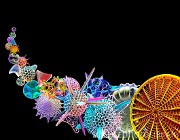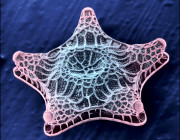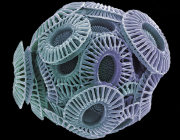Home :: List of Publicly Available Datasets :: Anophryoides haemophila AH6
Anophryoides haemophila AH6
Downloads:
| Principle Investigator(s) | Spencer Greenwood |
|---|---|
| External sample ID | Rick Cawthorn, Fraser Clark, Adam Acorn |
| NCGR Sample ID | MMETSP1019 |
| Sample accession number | CAM_SMPL_002585 |
| Assembly accession number | CAM_ASM_000403 |
| Combined Assembly Name | N/A |
| Genus | Anophryoides |
| Species | haemophila |
| Strain | AH6 |
| Clonal | Yes |
| Axenic | Yes |
| Prelim. NCBI Taxon ID | 46462 |
| 18S rRNA | |
| Importance of organism and transcriptomes | This is the only known ciliate pathogen of the American lobster (Homarus americanus) and contributes to losses in live holding estimated to be 10-15% under outbreak conditions.The prevalence and impact of this ciliate on wild stocks is unknown.The mechanism of pathogenesis is unknown and having EST data from ciliates recently infecting lobster and comparing to EST data from sea water starved ciliates should provide us with information on modes of infection and pathogenesis. |
| Additional citations and references | Greenwood SJ, et al..2005.Case report: outbreak of bumper car disease caused by Anophryoides haemophila in a lobster holding facility in Nova Scotia, Canada. Journal of Aquatic Animal Health, 17:345-352.Ragan et al.1996.The Lobster Parasite Anophryoides haemophila (Scuticociliatida: Orchitophryidae): Nuclear 18S rDNA Sequence, Phylogeny and Detection Using Oligonucleotide Primers.Journal of Eukaryotic Microbiology,43:341-346. |
| Environmental Data | |
| Primary citation for organism's characterization, if available | Cawthorn RJ,et al.1996. Description of Anophryoides haemophila n. sp. (Scuticociliatida: Orchitophryidae), a pathogen of American lobsters Homarus americanus. Diseases of Aquatic Organisms 24:143-148. |
| Latitude | 43.51667 |
| Longitude | -65.6 |
| Temperature (ºC) | 5 |
| Collection date | 01-MAR-04 |
| Collection time | 12:30 PM |
| Sample collection site | Atlantic_Ocean |
| Other collection site info | The ciliate was isolated from infected lobsters at a lobster holding facility (cordinates above) in Barrington Passage Nova scotia Canada . |
| Sample material (e.g. "seawater," "sediment," etc.) | lobster hemolymph containing the cliate was cultured in the media listed above. Ciliate was isolated from media for further morphological and molecular characterization. |
| Habitat description | coldwater holding facility |
| Other environmental metadata available | Experimental conditions used to isolate and grow cells was as follows, hemolymph (~100 ?L) from moribund lobster was placed into 10 mL modified marine axenic medium (ATCC 1651 MA medium - Messick and Small 1996) composed of artificial sea water supplemented with vitamins (RPMI 1640 vitamins solution, Sigma-Aldrich Ltd., Oakville, ON, Canada), 10 % fetal bovine serum and penicillin / streptomycin (100 U/ mL, 100 ug/mL) at 4 oC for 24 h.This allowed sufficient time for contaminating cell debris to settle and for intact lobster hemocytes to attach to the plasticware.The Anophryoides haemophila isolate Nova Scotia 2004 was then transferred to fresh media and axenic clonal cultures were established (Greenwood et al. 2005). |
| Other environmental metadata available | Experimental conditions used to isolate and grow cells was as follows, hemolymph (~100 ?L) from moribund lobster was placed into 10 mL modified marine axenic medium (ATCC 1651 MA medium - Messick and Small 1996) composed of artificial sea water supplemented with vitamins (RPMI 1640 vitamins solution, Sigma-Aldrich Ltd., Oakville, ON, Canada), 10 % fetal bovine serum and penicillin / streptomycin (100 U/ mL, 100 ug/mL) at 4 oC for 24 h.This allowed sufficient time for contaminating cell debris to settle and for intact lobster hemocytes to attach to the plasticware.The Anophryoides haemophila isolate Nova Scotia 2004 was then transferred to fresh media and axenic clonal cultures were established (Greenwood et al. 2005). |
| Habitat | marine habitat |
| Country | CANADA |
| Experimental Data | |
| Date of experiment | 03-MAY-11 |
| Growth medium | ATCC 1651 MA medium - Messick and Small 1996 made with Instant ocean |
| Modifications to growth medium | No L-?- phosphatidylcholine was added to the media |
| Temperature (ºC) | 4 |
| Salinty (psu) | 30 |
| pH | 8 |
| Investigation type | Eukaryotes |
| Other experimental metadata available | Ciliates were injected into a lobster at 1x10^5 in 3% NaCl. The lobster was held at 4C until moribund (4 weeks). Hemolymph containing ciliates was removed (1 ml aliquots) and cultured in ATCC1651 MA medium overnight to allow contaminating hemocytes and debris to adhere to the plastic containers. Ciliates (6,000 cells/ml) were transferred to fresh media and grown to sufficient density (109, 000 cells/ml). Cells were then washed with fresh artificial seawater (FASW) and resuspended in FASW at a density of 12,500 cells/ml and starved for 11 days. RNA was extracted by RNeasy kit with DNAse1 treatment and quantified by Nanodrop and quality assessed by Bioanlyzer. |








